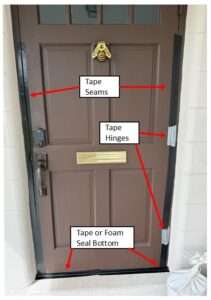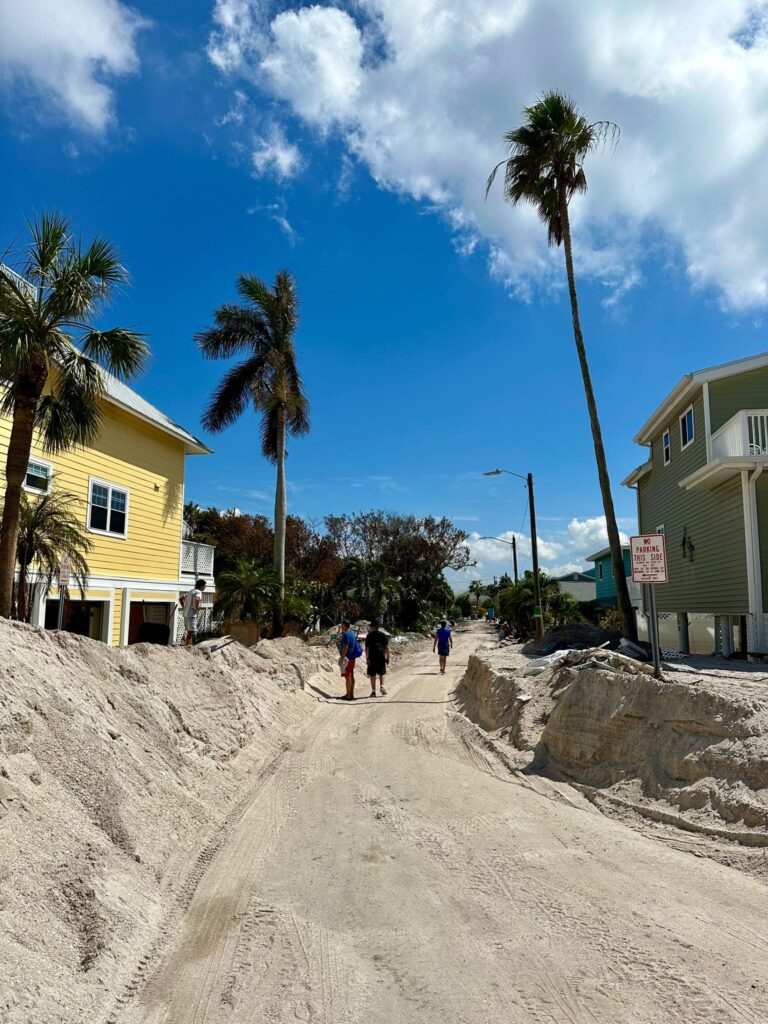
Supplies.
Readily available supplies can help protect your home against the threat of imminent tropical weather.
Results will vary due to nature being unpredictable, however these strategies can help minimize the damage.
Supplies
Find the supplies you need.
- Identify the openings to your home.
- List of readily available barrier supplies.
- How to build barriers.
- Which barrier method should be used?
- How to find your home elevation.

Identify the openings to your home.
- Exterior doors and frames
- Exterior doors can have water seep into them, especially if there are gaps or lack weather stripping.
- Windows
- Improperly sealed or low-lying windows are vulnerable.
- Garage doors
- Gaps at the bottom and sides that do not form a seal.
- Vents
- Dryer vents, crawl spaces, foundation vents, and AC/heating plumbing.
- Drains, sewer lines, and toilets
- Water can enter up bath tubs, toilets, and sinks.
- Foundation, ventilation, and weep holes
- Water can seep into your home through the foundation, cracks, ventilation, and drainage openings.
- Sump pump failures
- Water can backup if sumps are not running.
- Basement walls & floors, and chimneys
- Not common in coastal communities but need to be properly sealed.
Barrier Supplies.
- Each category below contains direct supplies links through the amazon associate program, which is no extra cost to you.
- Plastic to fill/cover cracks or openings
- Materials to seal openings
- Use tape or foam spray in order to seal all cracks for doors, door frames, garage doors, vents, and other openings to your house.
- Every entry makes your home vulnerable to water intrusion.
- Duct Tape
- Flex Seal Tape
- Gorilla Tape or Gorilla Seal Patch
- Painters Tape
- Great Stuff Foam Spray
- Flex Seal Spray MAX
- DAP Seal and Peal
- Flex Caulk
- Tarps to cover openings
- Products with reported success
- Duct tape, painters tape, gorilla tape, Flex Seal tape, Flex Seal spray, and other similar products.
- I have used duct tape, painters tape, gorilla tape, foam spray, and caulk depending on the water height anticipated.
- Other potential products-

Building Barriers – Step by Step.
- Identify Openings.
- Determine barrier height based on maximum forecasted water level.
- Gather Necessary Barrier Materials To Cover ALL Home Openings.
- Prepare and Clean Area (remove debris/dirt).
- Insert Plastic into Openings/Gaps (i.e. gaps between bottom of door and ground).
- Foam Openings / Caulk / Tape Openings and Let Products Dry.
- Tape Plastic Over Additional Openings (i.e. mail door).
- Tape door Hinges and all cracks that water can seep into.
- Cut tarp to size of opening(s).
- Tape tarp partially into place.
- Add Sand bags on the tarp.
- Adjust Tarp/Sand bags and add tape to hold in place.
- Adjust tape and sand bags to ensure all cracks are sealed.
- Add hurricane fabric if opening is not impact rated.

Which method should be used?
Storm surge estimates typically range from 1-15 feet, however this estimate does not tell you the height of water your home may experience. The barrier tool utilizes NOAA’s ETSS observed and forecasted data to determine the minimum barrier height for your home elevation. This method was within 0.9 feet approximately 36 hours before Hurricane Helene.
Sand bags are meant to help protect your home from minor flooding. Major storm surge will require additional layers (no guarantees) and the difficulty to defend your home increases as the water depth increases.
It is ultimately up to each user to determine how they should protect their home. Here are rough guidelines to consider (subject to change with conditions):
- No flooding projected
- Consider protection and placing sand bags as precaution in case the storm track changes.
- 0-2 feet
- Tape seams, foam spray/flex seal tape/caulking any openings, placing tarps, and sand bags.
- 2+ feet
- Same methods lower projections plus any additional precautions. Army Corp of Engineers does not recommend sand bags greater than five feet in height.
It is ultimately up to each person how to protect their home and how they want to proceed. Please review the disclaimer on the main page. As an Amazon Associate, I may earn from qualifying purchases made through links on this page, at no extra cost to you.